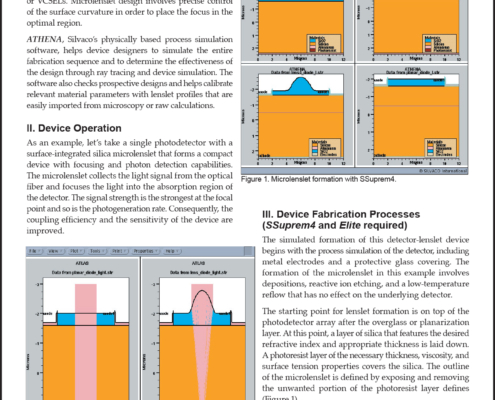
Simulation of Silica Microlenslet Formation by Etch and Reflow Using Elite and SSuprem4
Introduction
In response to high demand, device designers are developing silica microlenslets that offer efficient coupling between optical fiber bundles and arrays of photodetectors, LEDs, or VCSELs. Microlenslet design involves precise control of the surface curvature in order to place the focus in the optimal region.
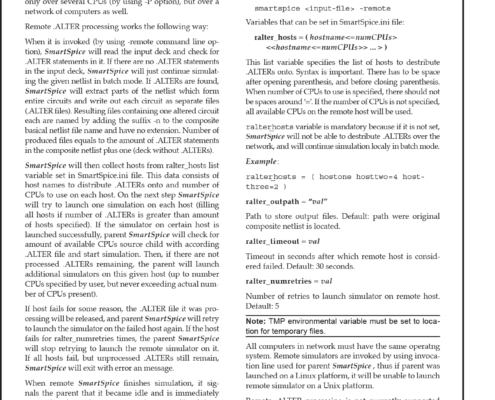
Remote ALTER processing
A new parallelization method has been implemented into SmartSpice. Now .ALTERs can be destributed not only over several CPUs (by using -P option), but over a network of computers as well.
Remote .ALTER processing works the following way:
When it is invoked (by using -remote command line option), SmartSpice will read the input deck and check for .ALTER statements in it. If there are no .ALTER statements in the input deck, SmartSpice will just continue simulating the given netlist in batch mode. If .ALTERs are found, SmartSpice will extract parts of the netlist which form entire circuits and write out each circuit as separate files (.ALTER files). Resulting files containing one altered circuit each are named by adding the suffix -n to the composite basical netlist file name and have no extension. Number of produced files equals to the amount of .ALTER statements in the composite netlist plus one (deck without .ALTERs).
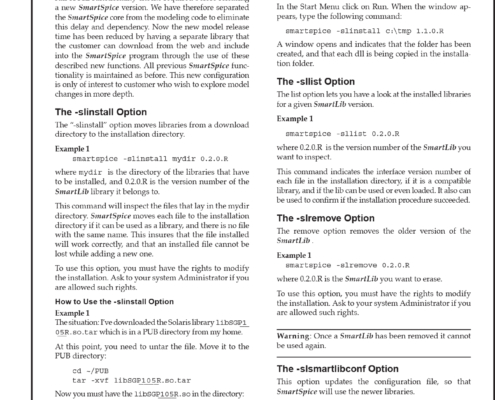
New SmartLIb Library of Models
In all previous versions of SmartSpice the model code (BSIM, diode etc.) was included in the one executable (SmartSpice ). This means any updates to the model code would take a while to reach the customer because of the full SPICE functionality checks required before releasing a new SmartSpice version.
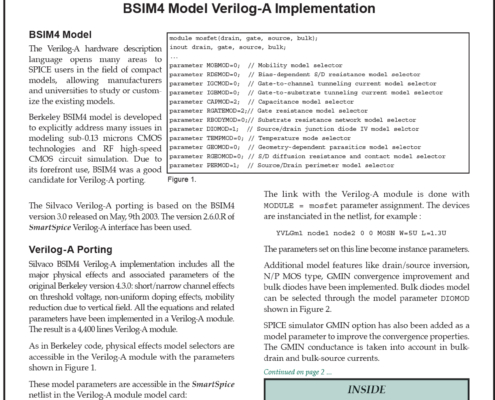
BSIM4 Model Verilog-A Implementation
The Verilog-A hardware description language opens many areas to SPICE users in the field of compact models, allowing manufacturers and universities to study or customize the existing models.
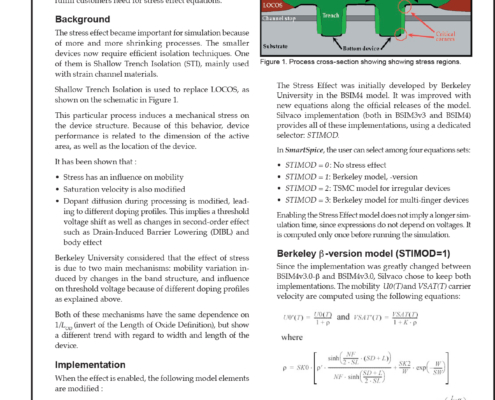
Stress Effect Model in BSIM3v3 Model
Stress effect models are now implemented in major models such as BSIM4 or HiSIM. The need for evermore accurate models with a strong relation to technology is accute. Since BSIM3v3 is still a widely-used model and has not been totally replaced by its successor, an improvement was made to the model in SmartSpice to fulfill customers need for stress effect equations.
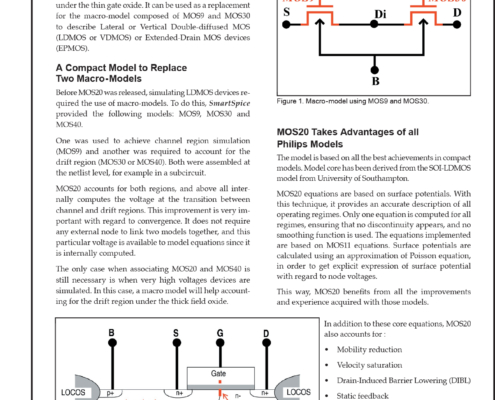
New Philips MOS20 LDMOS Model in SmartSpice
Philips MOS20 was released in January 2004. Its purpose is to provide a high-voltage compact model to describe both operation of the channel region and drift region under the thin gate oxide.

Sometimes I have problem to skip cells when importing cells
Q: Sometimes I have problem to skip cells when importing cells with the same names from reference library. Once we skip one cell, expert will complain other cells already exist in the new library.
A: To process name collisions for several cells when you try to skip some of them:
1. click ‘All Existing’ button in Cell Name Collision dialog. The name of all existing cells become highlighted in grey.
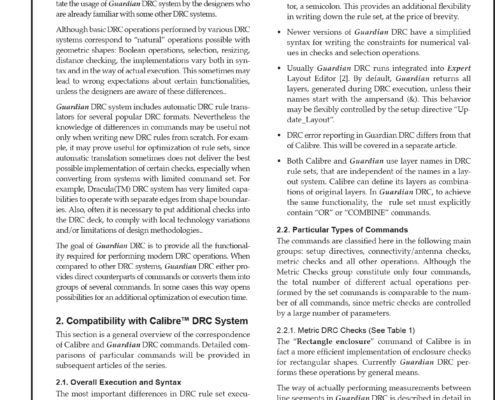
Guardian DRC vs. Other DRC Systems, I
1. Introduction
This article begins a series of articles that describe the compatibility of Guardian DRC system[1] in terms of functionality: command set, syntax and implementation with other leading industrial DRC systems. The purpose of this series is to facilitate the usage of Guardian DRC system by the designers who are already familiar with some other DRC systems.
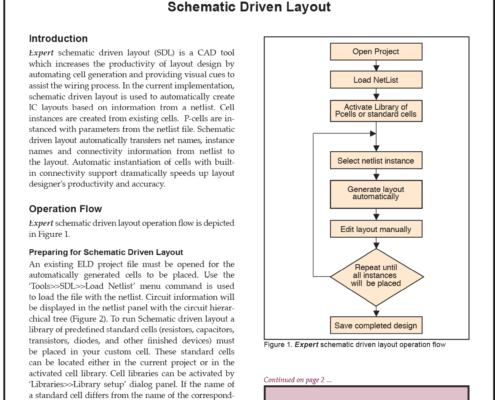
Schematic Driven Layout
Expert schematic driven layout (SDL) is a CAD tool which increases the productivity of layout design by automating cell generation and providing visual cues to assist the wiring process. In the current implementation, schematic driven layout is used to automatically create IC layouts based on information from a netlist. Cell instances are created from existing cells.
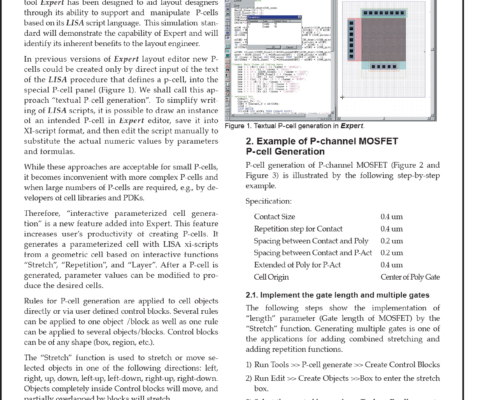
Interactive P-cell Generation
1. Abstract
Parameterized cells (P-cells) significantly increase the productivity of layout designers. Silvaco International’s tool Expert has been designed to aid layout designers through its ability to support and manipulate P-cells based on its LISA script language. This simulation standard will demonstrate the capability of Expert and will identify its inherent benefits to the layout engineer.
